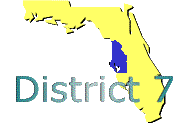| 1.0 | TRAVEL AND TRAFFIC MANAGEMENT |
| 1.8.0 | Travel Demand Management will generate and communicate management and control strategies that will support and facilitate the implementation of TDM programs, policies and regulations. It consists of two major functions which are (1) Increase Efficiency of Transportation System and (2) Provide Wide Variety of Mobility Options. |
| 1.8.1 | TDM shall include a communications function. |
| 1.8.1.2 | The communications function shall include the capability to send information and rates needed to implement management and control strategies that respond to changing environments, conditions, and policy needs to include, but not limited to, the following locations of action: |
| 1.8.1.2(c) | Transit centers. |
| 1.8.1.3 | TDM shall provide the capability to receive information and rates needed to implement management and control strategies that respond to changing environments, conditions, and policy needs to include, but not limited to, the following locations of action: |
| 1.8.1.3(c) | Transit centers. |
| 1.8.1.4 | The communications function shall provide the capability to send information and data is needed to implement management and control strategies that respond to changing environments, conditions, and policy needs to include, but not limited to, the following: |
| 1.8.1.4(c) | Parking availability. |
| 2.0 | PUBLIC TRANSPORTATION MANAGEMENT |
| 2.1.0 | ITS shall include a Public Transportation Management (PTM) function. |
| 2.1.1 | PTM shall include an Operation of Vehicles and Facilities (OVF) function that provides computer assisted control of the operation of vehicles and their associated facilities. |
| 2.1.1.1 | To enable the automation of the vehicle and facilities operations OVF shall provide the capability to gather the needed data to include, but not be limited to, the following: |
| 2.1.1.2 | OVF shall include a Command and Control (CC) capability. |
| 2.1.1.2.1 | CC shall provide the capability for real-time Vehicle Command and Control (VCC). |
| 2.1.1.2.1.2 | VCC shall provide the capability to transmit noted deviations to central control. |
| 2.1.1.2.1.3 | VCC shall provide the capability to display any noted deviations. |
| 2.1.1.2.1.4 | VCC shall provide the capability to automatically issue corrective Instructions to the driver including, but not limited to, the following |
| 2.1.1.2.2 | When CC detects a vehicle(s) has deviated from schedule it shall provide the capability to automatically determine the optimum scenario for returning the vehicle or fleet to schedule. |
| 2.1.1.2.3 | CC shall include an integrated traffic control capability that provides traffic signal preemption when required for schedule adjustment to Transit Vehicles at traffic signals (i.e., centralized or distributed). |
| 2.1.1.2.4 | CC shall include the capability for its computational capabilities to be located either on-vehicle and/or at remote locations. |
| 2.1.2 | PTM shall include a Planning and Scheduling Services (PSS) function to automate the planning and scheduling of public transit operations. |
| 2.1.2.1 | The PSS shall include a Planning capability. |
| 2.1.2.1.1 | PSS Planning shall be performed off-line from stored data that were collected in real-time. |
| 2.1.2.2 | The PSS shall include a Schedule Generation capability. |
| 2.1.2.2.1 | The PSS Schedule Generation function shall collect that data needed for schedule generation including, but not limited to, the following: |
| 2.1.2.2.2 | The PSS Schedule Generation function shall use the collected data in the automatic or semiautomatic development of transportation system schedules. |
| 2.1.2.2.3 | The PSS Schedule Generation function shall provide the capability to print schedules. |
| 2.1.2.2.4 | The PSS Schedule Generation function shall provide the capability to disseminate schedules to, but not be limited to, the following: |
| 2.1.2.2.5 | The PSS Schedule Generation function shall provide the capability to automatically update the customer service operator system with the most current schedule and schedule adherence information. |
| 2.2.0 | ITS shall include an En-Route Transit Information (TI) function. En-Route Transit Information provides travelers with real-time transit and high-occupancy vehicle information allowing travel alternatives to be chosen once the traveler is en-route. It consists of three major functions which are (1) Information Distribution, (2) Information Receipt, and (3) Information Processing. This capability integrates information from different transit modes and presents it to travelers for decision making. |
| 2.2.1 | TI shall include an information distribution function that disseminates information to travelers. |
| 2.2.1.1 | Information Distribution shall include an information network capability. |
| 2.2.1.1.2 | The Information Network shall provide the capability to disseminate information to travelers that will assist them in making decisions about transfers. |
| 2.2.1.1.3 | The Information Network shall provide the capability to disseminate information to travelers that will assist them in making decisions in the modification (includes both intermode and intramode) of their trips. |
| 2.2.1.1.4 | The Information Network shall provide all users with information that is from a single source in order to ensure consistency across all users. |
| | |




